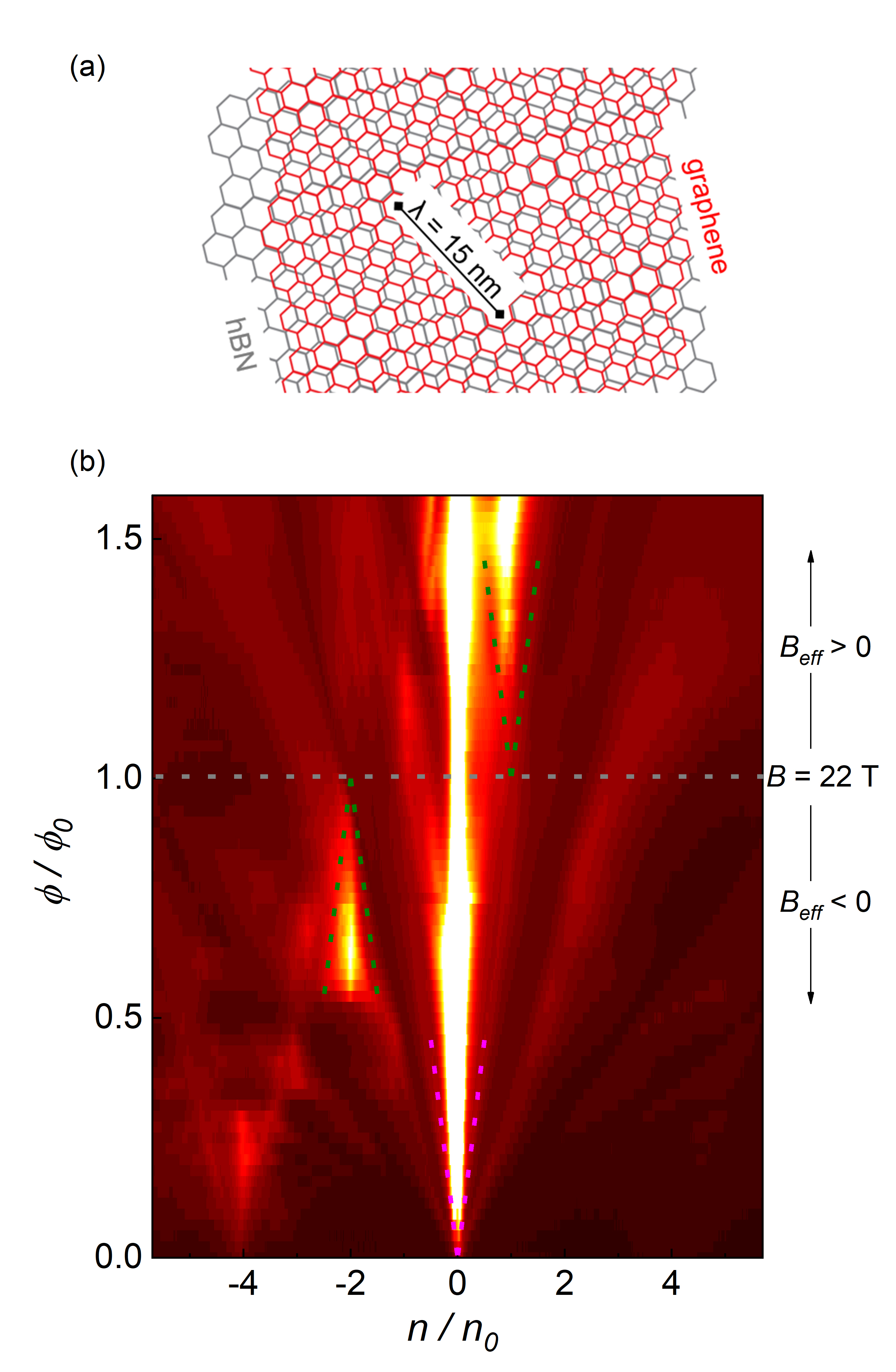Sergio Pezzini, Steffen Wiedmann, Uli Zeitler, HFML Nijmegen.
Two-dimensional layers of graphene and hexagonal boron nitride (hBN) both have a honeycomb atomic structure, with a slight lattice mismatch of 1.8 %. When placing graphene on top of hBN one forms a so-called moiré pattern, with a large periodicity of λ ≈ 15 nm in case of perfect crystallographic alignment (Figure (a)). Subjecting these moiré superlattices to high magnetic fields creates a fractal energy spectrum in the two-dimensional electron system, the socalled Hofstadter butterfly. More specifically, every time that rational values of flux quanta ϕ0 = h/e thread the superlattice unit cell, replica of the original Dirac fermions are created. At ϕ/ϕ0 = 1, these new particles behave as if subjected to an effective magnetic field Beff = B – 22 T.
Researchers from HFML-RU/FOM in Nijmegen, in collaboration with colleagues from the University of Manchester, have investigated the Landau quantization of these replica Dirac fermions using temperature-dependent magnetotransport experiments in magnetic fields up to 35 T. The study revealed that the replica Dirac particles form field-induced insulating states, with an energy gap for both the bulk and edge excitations, reminiscent of that of the “original” ones. In Figure (b) one can observe such states as bright areas in the color-map of the two-terminal resistance, corresponding to regions of low (effective) filling factor. The insulating states were characterized quantitatively by determining the field dependence of their energy gaps, estimated from temperature activation of the four-terminal resistance. Combining these data with a simple theoretical model, the researchers realized that the replica particles created at 22 T have reduced Fermi velocity and a gap at the Dirac point. These results open the possibility of using magnetic fields with tuned twodimensional superlattices to create Dirac fermions with on-demand Fermi velocity and gap size.

Figure: (a) Sketch of single-layer graphene aligned on top of hBN. The lattice periodicities and mismatch are exaggerated to allow easier visualization of the moiré superstructure. (b) Color plot of the two-terminal resistance measured at 1.5 K on an aligned graphene/hBN Hall-bar device (fabricated at University of Manchester). The x-axis (y-axis) indicates the number of electrons (flux quanta) per superlattice unit cell. The dashed magenta (green) lines delineate the regions of (effective) filling factor less than 1 investigated for the original (replica) Dirac particles.
Field-induced insulating states in a graphene superlattice, S. Pezzini, S. Wiedmann, A. Mishchenko, M. Holwill, R. Gorbachev, D. Ghazaryan, K. S. Novoselov, and U. Zeitler, Phys. Rev. B 99, 045440 (2019).
https://journals.aps.org/prb/abstract/10.1103/PhysRevB.99.045440
Contact: Sergio.Pezzini@iit.it







Leave A Comment
You must be logged in to post a comment.